Ever wondered which trees grow the fastest? Some of the most popular trees today are those that grow fast. Many homeowners use fast-growing shade trees and hedges to take advantage of these value-added landscape design strategies more quickly.
Today, this article highlights the 8 fast-growing trees today. With proper planting, these trees grow multiple feet each year. Let’s go!
How Can Trees Grow Faster?
Plant Zone
Weather and temperature change strongly influence a tree’s capacity to grow. The plant hardiness zone in which you want to plant determines whether or not the trees will thrive effectively. Not all tree species can live in every zone, so understanding your zone before buying trees can help them flourish and last.
Water
While it seems obvious, trees need water to thrive. Providing water to your trees may make a massive difference in their ability to achieve full maturity size quicker. We recommend a slow irrigation system to provide deep hydration to your tree roots without drowning them. The key is to keep the soil damp but not soggy, with brief spells of dryness in between waterings so trees can get adequate oxygen. Trees are stunted when not given enough water.
Fertilizer
Fertilizer promotes plant and tree growth. It will aid their quicker, taller, fuller, and healthier development. Fertilizers boost nutrients in the soil, encouraging growth and photosynthesis. Fertilizers are multivitamins for trees, such as nitrogen, phosphorous, and potassium levels.
Mulch
A layer of mulch surrounding your tree may give several growth-promoting advantages. Mulch aids trees by maintaining moisture and boosting nutrients in the soil. Mulch also prevents the growth of grass and weeds, which compete with soil nutrients.
Protection
Protecting your growing trees is also essential. Help protect your young trees from squirrels, animals, dogs, lawnmowers, and other threats by erecting tree shelters such as cylindrical tubes that protect the trunks of young trees.
Which Trees Grow The Fastest? 8 Fast Growing Trees
1. Japanese Flowering
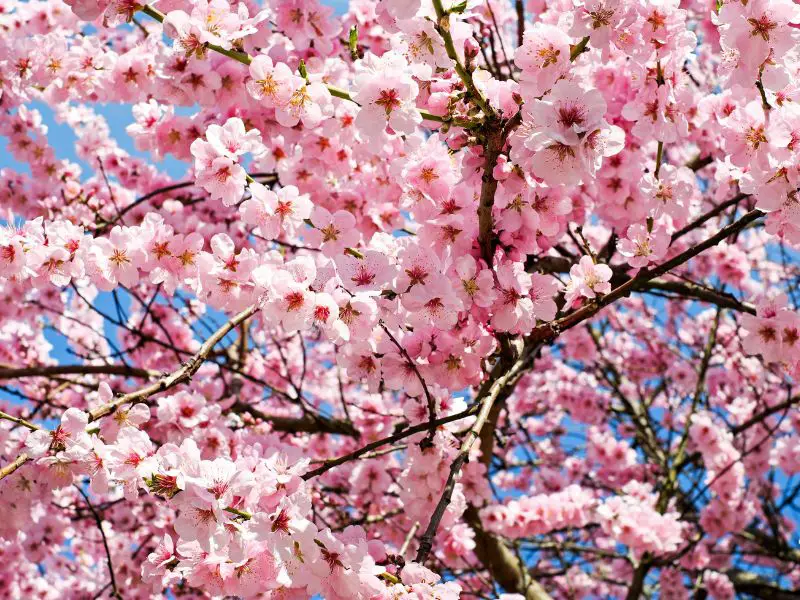
Japanese blooming cherry trees grow rapidly, adding around one foot each year and reaching a height and width of 15 to 25 feet. In the spring, spectacular white to pink blooms appear, followed by little blackish fruits in the summer. This species is prone to several pests and disease problems, such as powdery mildew and aphids, so it’s crucial to keep a careful eye on your tree and treat it at the first sign of trouble.
- Hardiness zone: 5 to 8
- Sunlight: Lots of sun to part shade
- Soil: Well-drained loamy soil
- Years for full maturity: 10 – 20 years
2. Red Maple
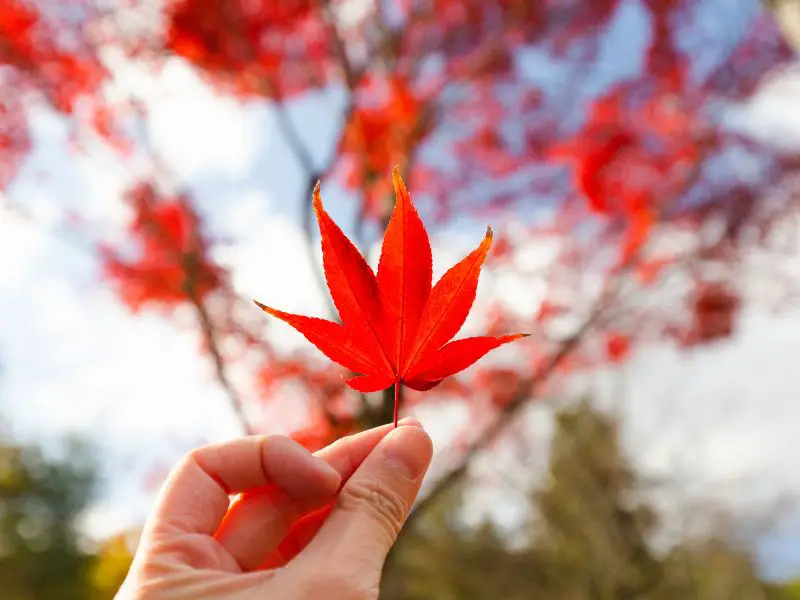
Inspired by its beautiful autumn shade – reddish-orange leaves against much redder stems – Red maple is an excellent choice for emphasizing your landscape design. Based on its kind, Red Maple can also grow golden-yellow leaves rather than red-shaded ones. This tree grows best in fall, but you can easily spot its bursts of small red blooms in spring.
- Hardiness zone: 3 to 9
- Sunlight: Full sun is ideal for Red Maple, or at least 6 hours of direct sunlight daily.
- Soil: The red maple thrives on grounds that are acidic, loamy, moist, rich, sandy, silty loam, well-drained, and clay.
- Years for full maturity: 25 years
3. Weeping Willow
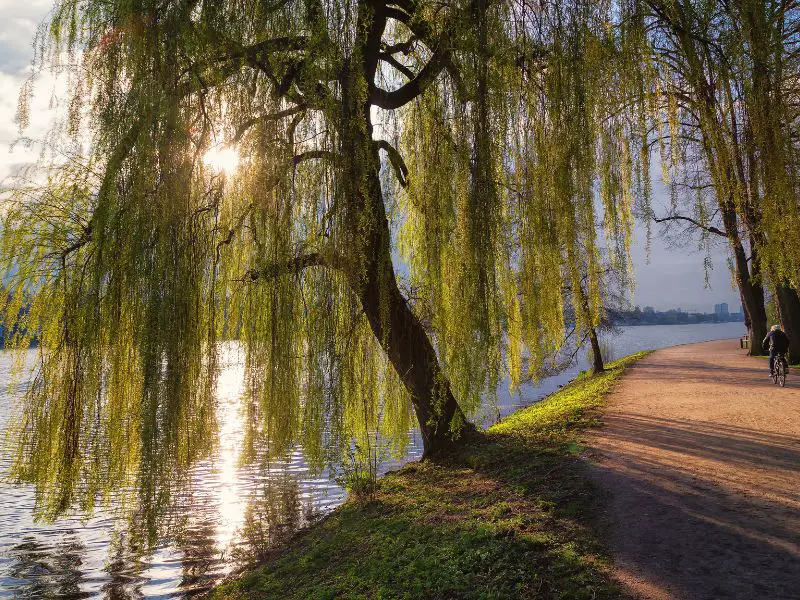
Weeping willows grow quickly, adding more than two feet every year. They often reach a height and spread of 30 to 50 feet. The tree’s limbs gently curve downward, and little yellow blooms develop in late winter or early spring. Weeping willow wood is famously fragile, making it unsuitable for hanging over buildings. Pruning should be done in late winter or early spring.
- Hardiness zone: 6 to 8
- Sunlight: Full sun to partial shade is ideal for Weeping Willow
- Soil: Slightly moist and acidic. Well drained.
- Years for full maturity: 15 to 20 years
4. Nuttall Oak
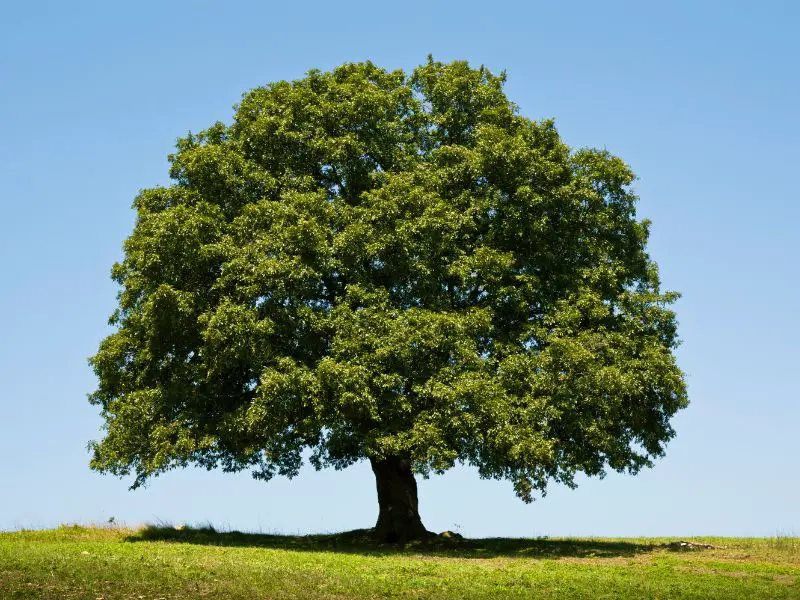
There are more than 500 different kinds of oak trees. Several of them make good shade trees and grow quickly. For example, the Nuttall oak grows 2 feet taller every year. This tree, which loses its leaves in the fall, is known for its reddish-brown acorns and bright red-orange leaves. Here are some fast-growing varieties of oak trees.
- Pin oak
- Northern red oak
- Sawtooth oak
- Hardiness zone: 6 to 9
- Sunlight: Full sun
- Soil: Grows well in acidic, loamy, moist, wet, well-drained, and clay soils. This tree can also moderately tolerate drought.
- Years for full maturity: 30 years
5. Koa
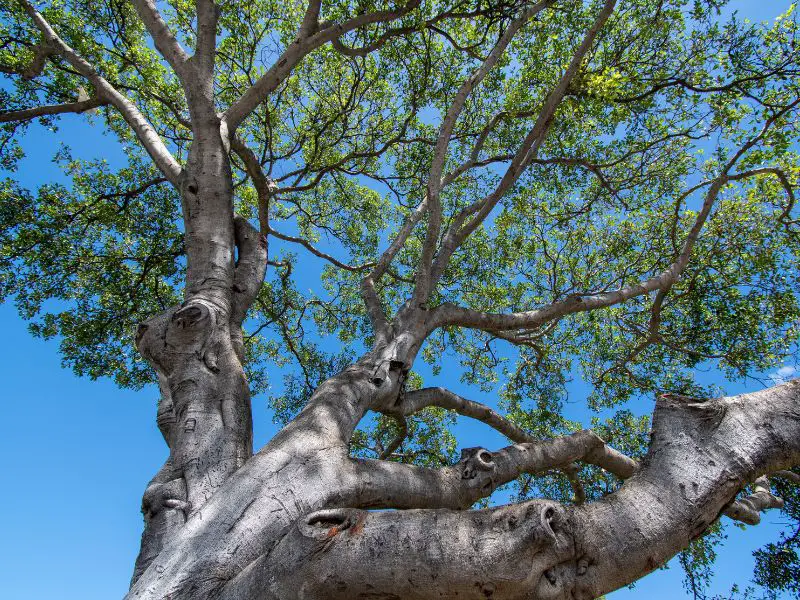
Koa trees have a rapid growth rate of 5 feet per year during the first five years of their life, and they can reach spectacular heights in higher elevation settings in only a few decades. While koa may grow at lower altitudes, some kinds have a higher risk of being infected with illnesses after decades of age.
- Hardiness zones: 10 to 11
- Sunlight: Full sun exposure
- Soil: Thrives very well in acidic and well-drained soil
- Years for full maturity: 30 years
6. Alder (Alnus glutinosa)
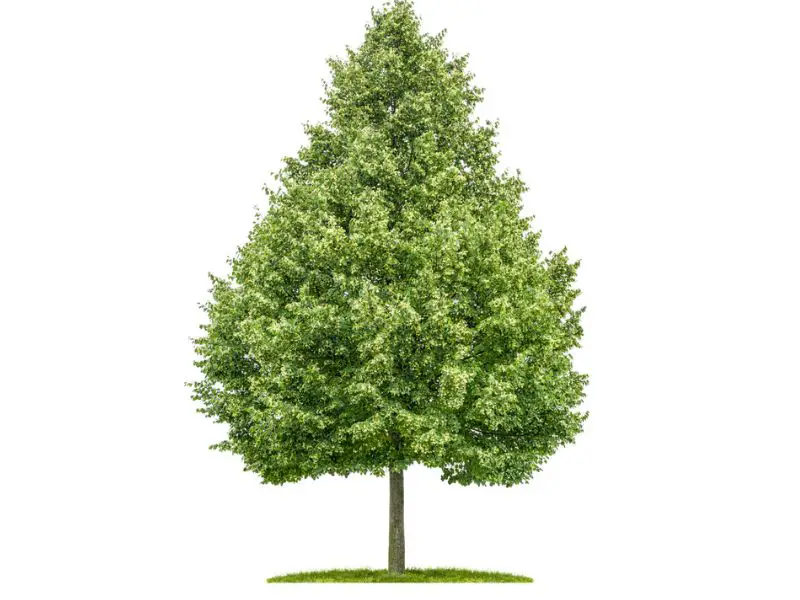
Alder is a pyramid-shaped tree with glossy, dark green, spherical leaves. The plant produces yellow catkins in early April. Then a cluster of woody fruits follows, resembling pinecone ornaments on the barren branches throughout the winter. This tree supports the fertility of the soil it’s planted, making it an excellent plant for cultivating your garden.
- Hardiness zones: 5 to 8
- Sunlight: Full sun to partial shade
- Soil: Thrives well in wet and clay soil
- Years for full maturity: 60 – 70 years
7. Rowan
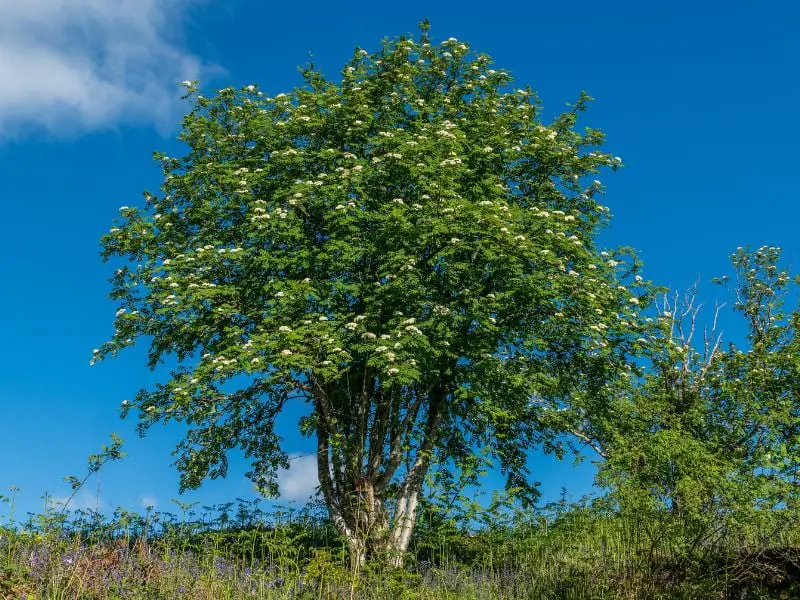
Rowan trees have bark that’s a silvery brown and leaves that become a beautiful burned red in the fall. Clusters of white blooms appear in the spring, and bright orange berries have taken their place by fall. The fruit may also be used to produce jelly. This tree’s slender form makes it an excellent choice for a showcase in any garden.
- Hardiness zones: 3 to 5
- Sunlight: Full sun to partial shade
- Soil: Thrives best in moist and well-drained soil
- Years for full maturity: 15 years
8. Hazel
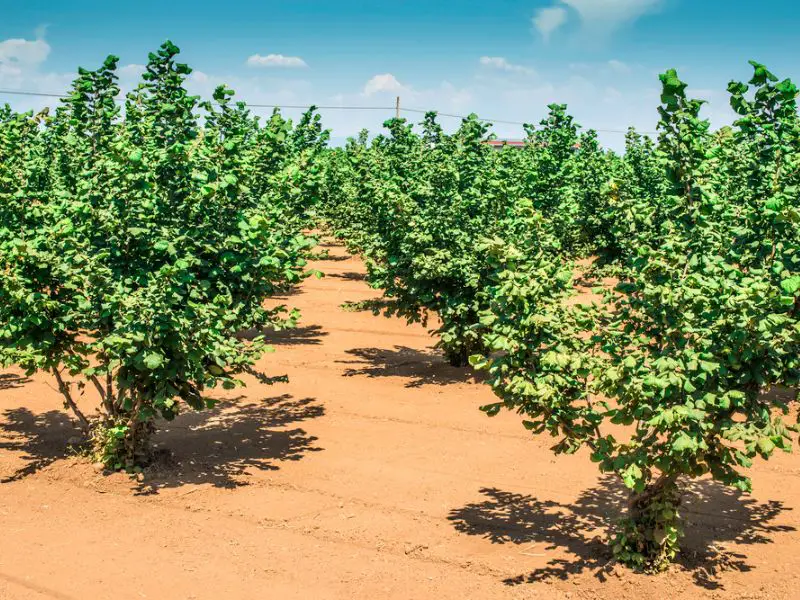
Hazelnuts may reach a height of 12-20 feet, with an average annual growth rate of 12-34 inches. Mature trees form a spherical or umbrella-shaped canopy, giving a good shade when in leaf and less when not. This tree has thin, zigzagging twigs with red hairs and smooth, light gray-brown that nets out with age. It just takes three to five years for the first nut to come in. Hazelnuts grow quickly and easily, don’t take up as much room as other nut trees, and yield sweet, tasty nuts yearly.
- Hardiness zones: 4 to 9
- Sunlight: Full sun and partial shade
- Soil: Strict well-draining soil with reasonably low nutrients.
- Years for full maturity: 8 years
Author’s Note
Trees have long been known to be an important environmental asset, and fast-growing trees are precious. They are not only beautiful to look at, but they also put carbon dioxide back into the ground, which helps reduce global warming. Plus, they provide shade, which helps protect people and buildings from winds and high temperatures.
Still, one of the best areas for growing these trees is the northern regions of the US west coast. Currently, over 80% of the forests in these locations are fast-growing trees, which have grown well for thousands of years.
Related: Best Home Office Plants, Most Endangered Plants, Guide to Growing Dragon Fruit


4 thoughts on “8 Fast-Growing Trees That Will Transform Your Landscape”